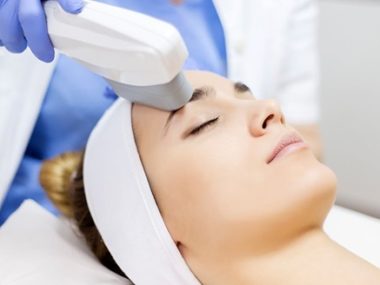Melasma is a skin condition, with grayish-brown blotches and darkened patches on the skin, mostly on the cheeks, upper lips, chin and forehead that persist. This condition is common in pregnancy; however, it is not limited just to pregnant women. Melasma affects women of all ages, and needs a thorough examination for diagnosis. To check how deeply melasma is penetrating the skin, Best Skin specialist in Lahore need to look at the skin under a device known as the wood’s light.
Sometimes, melasma can mimic other skin conditions, which is why it is best to get diagnosed by a skincare professional, who will perform a skin biopsy under aseptic conditions safely in their office.
According to the director of the Pigmentary Disorder and Multi-Ethnic Skin Clinic at Harvard-affiliated Massachusetts General Hospital, Dr. Shadi Kouroush, melasma can affect women at all stages of life. But when it starts in the teens and early 20s, then it may persist for decades.
The American Academy of Dermatology states that melasma is more common in darker skinned individuals, as their skin has a higher concentration of melanocytes-the pigment producing cells.
What are the treatment options for melasma?
Sometimes melasma fades on its own, while other times it persists, causing emotional distress to the patient. However, there are a number of good treatment options available that can help to decrease this pigmentation.
Sun protection
For people who suffer from melasma, sun protection is a must because sun exposure can significantly worsen melasma and aggravate the condition. Extreme diligence is required and medication with physical blockers such as titanium dioxide and zinc offer better protection than older formulations or those with chemical sunscreens.
There are formulations today with micro-ionized zinc and titanium dioxide that sink into the skin and offer better protection. They are also available as over-the-counter products at any drug store or doctor’s office. Get a formula that works for you and has a sun protection factor of at least 30; be sure to wear the sunscreen in winters or on days when there is an overcast as well.
Chemical peels
Chemical peel is a special solution that ‘peels’ off the outermost layer of skin cells. This allows the newer skin from underneath to resurface and the discolored patches to come off. For melasma, chemical peels are very effective, especially when they are combined with topical therapy. Your skincare provider can prescribe topical skin lightening agents—with kojic acid or azelaic acid, that reduce the chances of post-inflammatory hyperpigmentation.
Microneedling
This procedure creates pores in the top layer of the skin, to allow the topical creams to penetrate into the deeper layers. In this way, the medication for melasma can reach the blood vessels and the melanocytes. Like chemical peels, microneedling also performs better if topical creams are used with it.
Topical creams for melasma
The medication for melasma is directed to stop the production of melanin and decrease the inflammation of skin. The ingredients in these topical agents include tranexamic acids, kojic acids and hydroquinone. These are applied daily in a regimen prescribed by Best skin specialist in Karachi as suited to your condition.







